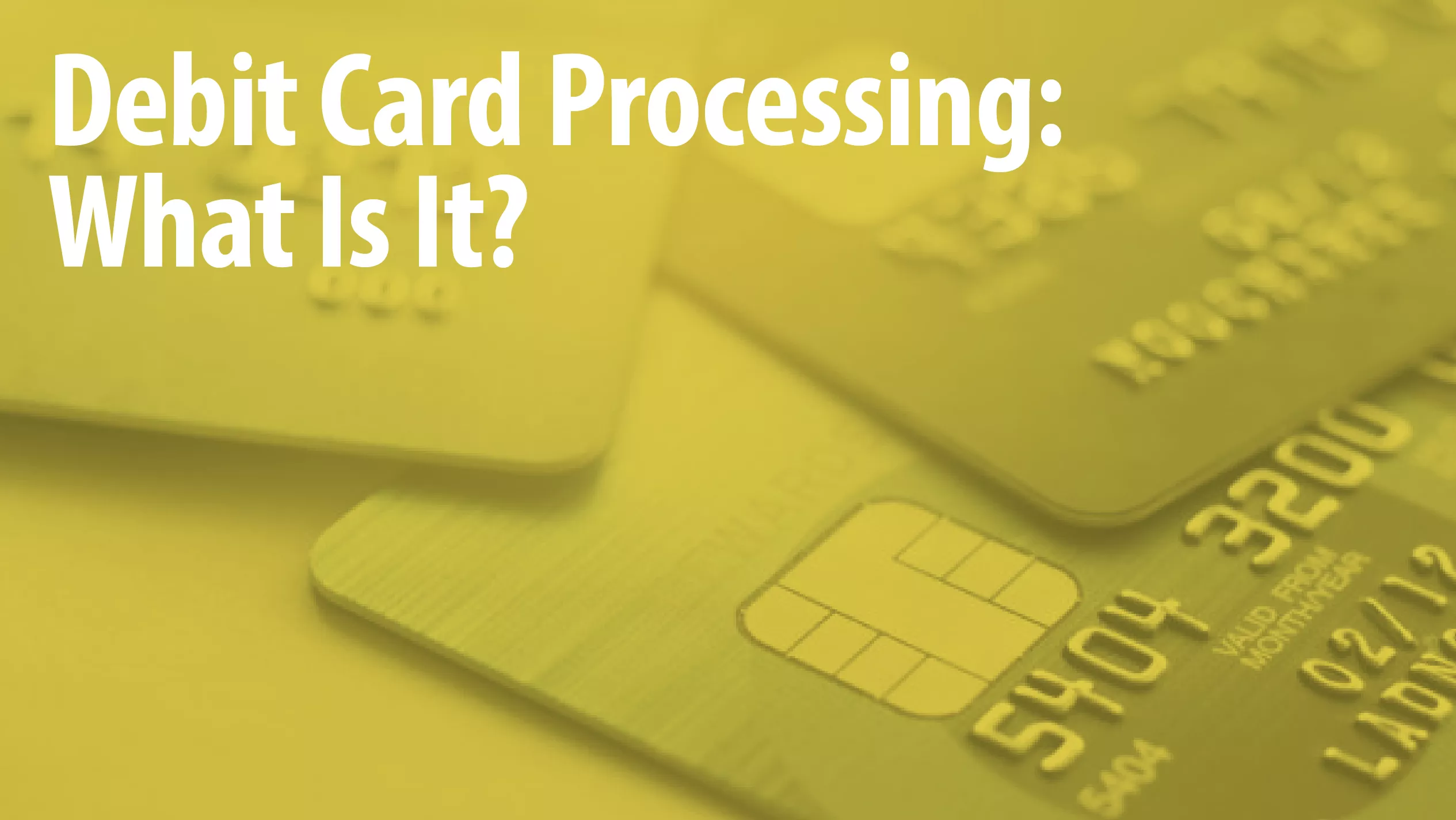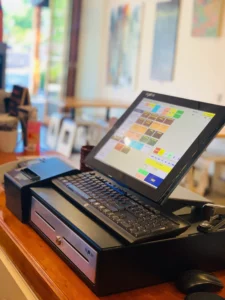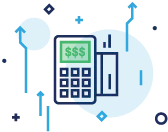
TABLE OF CONTENTS
There are a lot of misconceptions regarding debit card processing in the payments space. Today, we will demystify this concept together as we explore this method of payment processing. With more customers paying with debit cards and preferring this method more than ever, now is the time to ensure your business is set up to fulfill their needs. But what takes place during a debit card transaction? As a business owner, it’s also important you’re familiar with debit card processing fees and how debit and credit card processing are alike.
To understand why accepting debit cards is so popular and why it plays an important role in your business, you first need to understand how it all works. Let’s get started!
The Basics of Debit Card Processing
Debit card processing is when a customer makes a purchase with a debit card either online or in-person. Afterward, the method of payment undergoes a process of verification and approval by a financial institution.

One question you may ask is, “What happens after a debit card is swiped?” First, a debit card is swiped or inserted into your POS terminal, mobile reader, or virtual gateway. The card terminal will then read the card information and send it over to the customer’s bank for verification. This is because the processor needs to know if there is enough money in the customer’s account to cover the intended purchase of your goods/services.
The bank will then verify if the account does indeed have enough funds and will confirm or deny the transaction if the consumer does not. If there is indeed enough money, the bank will then run a security check and will approve the transaction if everything checks out. As a merchant, this keeps you protected during the debit card transaction.
The Difference Between Debit and Credit Card Processing
Debit cards and credit cards work in two completely different ways. A debit card, as mentioned previously, simply withdraws money from your bank account, so it is important to know how much you have at all times in order to avoid any overdraft fees.
As soon as a customer swipes their debit card at a terminal, the money can be taken out of their account in one of two ways:
- PIN. If the customer inserts their Personal Identification Number (PIN), the card goes through the debit card processing network. With this method, the money immediately comes out of their account and pays for the good and/or service.
- Signature/Run as Credit. When the user chooses this method at the terminal, the card goes through the credit processing network and the funds are placed on hold. The amount typically clears in 1-3 business days. Then, rather than inserting a PIN, the customer signs for the purchase.
If you are wondering how businesses accept credit card payments, this process is much more complex from the business owner’s perspective. Credit card transactions use money that your customer borrows from the bank. A bank will issue the consumer a card with a set spending limit. When the credit card is run through the terminal, the information goes to a payment processor first.
It is the payment processor company’s job to relay the information to the customer’s bank and the merchant’s bank. The payment processing company will also conduct a security check to prevent fraudulent transactions from occurring. If there is enough money available to cover the intended purchase, then the transaction will be approved. If the card has passed its maximum threshold, the transaction will be declined. All of these steps occur through the credit processing network in a matter of seconds.
Terminals and Hardware

Based on your available payment options, there are many ways to process debit card transactions. Whether you run a brick and mortar store, online eCommerce business, or want to take payments over the phone, the right solution is out there.
In general, most businesses will need a payment terminal from which a customer can swipe, tap, or insert their debit card. What’s great is that these same terminals can also accept credit card transactions as well. We recommend that you speak to a professional about which debit or credit card machine will best suit your business as well as what hardware will be needed, as everyone’s needs are different.
Other options
With more millennials choosing alternative methods of payment (AMOP) over cash, debit, or credit cards, many business owners are analyzing how best to fulfill their customers’ payment needs.
Some examples of this are Apple Pay, Google Pay, Venmo, CashApp, Cryptocurrencies, and loyalty programs to name just a few. These newer forms of payment are increasing in use at a rapid pace. Because of this, it’s important to stay up to date on what your customers prefer to use.
Currently, mobile payments and eCheck processing are two of the most budding payment options outside of debit and credit card processing. With these options, customers typically do not need to have their debit cards with them and are therefore considered Card-Not-Present transactions.
Debit Card Processing Fees
Payment processing fees, also referred to as “interchange rates,” are determined by analyzing a few factors:
- The size of the transaction. The larger the transaction, the potential for higher fees.
- Is the debit card regulated or unregulated? Regulated means the debit card issuing bank’s assets total over 10 million dollars. If the card issuing bank has less than 10 million dollars in assets, then the bank is unregulated. Regulated debit fees are substantially lower than unregulated debit fees.
- Did the customer use their PIN or signature?
- What type of business do you own?
Debit card processing fees/interchange rates are just one aspect of what you will need to pay as a business owner. There are also “provider markups” based on the merchant provider’s pricing structure.
Some providers have a fixed markup over the debit card processing fees based on the purchase amount. Others use more of a tiered setup based on the type of transaction. Ask your merchant services provider about fee schedules or refer to your merchant agreement for your personalized rates.
Understanding Your Options When it Comes to Debit Card Processing
It’s important to research and analyze what your business and customers need when choosing credit and debit card processing systems.
Every provider and terminal will offer a variety of debit card processing fees. It’s important to compare the interchange fees, provider markup, and hardware costs against the value it brings your business. Not all payment processors are created equal. Ask questions and take the time to figure out what suits your business. If you’re applying for a merchant account, be ready to be upfront about your debit card processing needs.
Are You Ready to Offer Debit Card Processing?
As you can see, debit and credit card processing are essential functions of a business in today’s day and age. Debit card processing is a simpler method of collecting payments. By working with a company that understands how to best serve the needs of your customers, takes security measures to help prevent retail fraud, and offers various interchange options to help business owners pay reasonable and fair rates, your business can thrive. Expand your payment methods and grab hold of your processing fees by acquiring debit card processing today.





